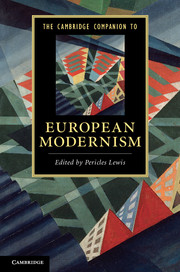6 - Great Britain
from PART I - “CORE” MODERNISMS
Published online by Cambridge University Press: 28 September 2011
Summary
Modernism has traditionally been considered a denationalized enterprise - axiomatically the work of “exiles and émigrés,” “an art without frontiers,” “the product of an era of artistic migration and internationalism.” In the context of British modernism this conventional story of deracinated internationalism contains an essential truth, but it narrows and simplifies the area of inquiry unnecessarily. It is a curiosity of the field of Anglo-American modernism that London is among the most studied of modernist locations, yet British modernism is thought to be virtually non-existent, on the grounds that most of the major London-based modernists were expatriates rather than British-born writers. I hope to demonstrate, however, that if "British modernism" sounds like a contradiction in terms, this is not merely because so many of its important participants were British only by adoption if at all (and this is the enduringly useful insight at the heart of the exiles-and-émigrés narrative), but also because a number of the British-born writers of the period identified most strongly not with the political nation-state of the United Kingdom of Great Britain and Northern Ireland, but with one of its constituent cultural nations and regions.
- Type
- Chapter
- Information
- The Cambridge Companion to European Modernism , pp. 94 - 112Publisher: Cambridge University PressPrint publication year: 2011
- 3
- Cited by

